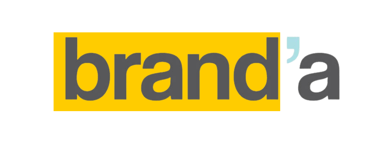Branding; What’s in a name?
Brand names and their importance
ilker bayar
8/14/20235 min read


I will give a blunt introduction to the topic but the rest will not disappoint. I promise!
A brand name and a logo design are two of the most important elements of the branding journey. Surely, branding is much more than choosing a name, designing a logo and collaterals which I call the vanity. Some professionals who design logos and graphics claim to be branding experts and they are not entirely wrong, but there is much more to branding than these two vanity aspects. I wanted to address a particular problem in this post; naming.
To explain, I will begin with a very simple analogy; a brand name is like a person’s name which is absolutely necessary in helping people distinguish a person from others. Differentiating a brand begins with a name. Then comes a logo to associate it with the brand which can be considered as a face of a person or the most distinctive features.
Think of someone really close or important to you, like a best friend, a sibling, or a parent. What you will think about them immediately will be the name and their face will vividly appear in your mind. Some distinctive features will prevail like green eyes, a characteristic nose, perfect lips, thick beard, delicately thin eyebrows, or even a mole (don’t mock moles, in French, we call them “grain de beauté” which translates as a grain of beauty).
Anything can be significant about a specific person you are thinking of. Then will come their character traits and how they make you feel, and on (in branding those are associated with the brand message, story, culture, positioning, etc.). But initially, when we talk about people, we use their names, for a brand, it is the same. Then, we instantly think of people’s physical features and the broader aspects come later.
... Do you remember Jake?
Jake?
You know the tall guy, blue eyes!
Oh yeah, Jake, the sexy blonde...
A name is as important for a brand as it is for people. Coming from a multicultural country and family, I have witnessed quite different worlds. In some of the subcultures in Turkey where I grew up, there exist some of the strangest names. The ones that I find the most interesting are Eros (a lovely lady whom I know), Duck, and Lemon. Having lived in China, I have heard some strange names there as well. Some of them cannot even be translated correctly. That’s culture...
Some cultures take it to a whole new level and even give numbers as names. Yoruba twin baby names Taiwo and Kehinde are just the right examples. Taiwo means first to come and literally means “taste the world” and Kehinde stands for “last to come”. First one is supposed to go out there and experience the world and the second one is more cautious. This odd naming concept is cultural and I do not want to mock people for their names as they probably did not choose them in the first place and from a cultural point of view there is nothing wrong with these names. Because again; culture…
But then there are millennial names that make you think no sane person would name their child so ridiculously. It is the same with naming a brand. Some names might be a product of cultural heritage. But some names are super random which makes you think why on earth did someone come up with that?
By no means you should name your brand with an instant urge when it feels right at that moment, or because it sounded funny, or interesting. The logic behind this is simple; because you cannot change it. Once you have a name for your brand, you start building everything on that name. A name does not always have to be the coolest there is but needs to be rather than just a random thought. Some names are just beyond weird and cannot even be pronounced in any language on earth. Or worse, sounds like someone swallowed the vowels. Or your cat walked on your keyboard like QCWYERB.
I have been around 4 continents and several countries and the weirdest brand names I have ever seen so far were unfortunately in China. I would see a really stylish boutique with gorgeous merchandise and nicely dressed windows and all, only to realise above the signage outside that the brand name is something that sounds worse than any IKEA furniture. And they are trying to westernise the names. Here is an article to prove my point. https://www.nytimes.com/2020/02/11/style/amazon-trademark-copyright.html
I wish I could help every single Chinese company with picking better names for their companies or brands. I would definitely begin with HuaWei and XiaoMi.
For western brands entering China, it is a different story. If you are entering the Chinese market, it is imperative to adapt a brand name into Chinese due to linguistic differences as it is very difficult for the majority of Chinese people to mention your brand, even closer to English. Everything needs to be adapted to Chinese otherwise your name won’t be mentioned much, if at all.
I remember trying to describe my hotel to a taxi driver which was simply futile. In most parts of the world, international brand names are somehow understood even though they may not always be pronounced correctly. But for the Chinese market, it is a whole different issue. No translation/adaptation means no brand. And even the most successful of international brands have experienced the same problem.
Take the famous Coca Cola example. When the company first entered the Chinese market, they had phonetically adapted and translated the name as “Ke Kou Ke La” which meant something like “this makes your mouth hot”. Imagine the reaction of Chinese consumers back then! Later on, the name was adapted again as “Ke Kou Ke Le” which can be best translated as “it makes your mouth happy” which is absolutely in line with Coca Cola’s branding; open happiness. Today, almost any foreign brand has an adaptation or a Chinese name (even people do, mine is Yi Li Ke 伊力克). You can read more about the importance of brand names in China and how it affects sales here.
Adaptation of your brand name can be market-specific but naming a brand is an essential part of a brand strategy and it requires careful thinking and planning. Because once you have a name you cannot change it. Well, nothing is set in stone, and brand names can surely be changed too. But it would be a long and painful process. Changing a brand name (or the logo) might cause a lot of turmoil, confusion and most certainly losses in sales (among all the other nasty things you do not want to handle). Therefore, it is vital to stick with a name that will last a long time, hopefully forever.
So, when companies are working on their branding, they need to consider this aspect thoroughly. Is the name in line with the brand story and DNA? Would it resonate with the masses? How about when the company goes international?
Imagine positioning a brand with a quirky name in the luxury segment. A brand name will have to resonate with people so that it can be positioned accordingly too. Most designers choose their own names as it is much easier for people to associate them with a specific person, their talents, designs, or trademarks.
Here is a caveat before I end this article. As I said at the beginning, a brand name (and a logo) is not all there is to branding. They are certainly some of the most crucial and dominant aspects but not all there is to a brand.
In Shakespeare’s renowned Romeo and Juliet, Juliet famously says “What's in a name? That which we call a rose, by any other name would smell as sweet;” In this very philosophical and poetic approach, Shakespeare brilliantly questions the notion of primary qualities of things which are not necessarily tied to a name. A rose, though called differently in every language, is still a rose that we all perceive. This, I believe, is a great illustration of how branding is not merely about names or logos. We speak of feelings. There lies a purpose. A message and stories to be told.
What else goes into branding? Please share your thoughts.
If you need to work on your branding, you know who to call.
Consultancy
Expertise in fashion and luxury branding.
Training
Agency
hello@branda.website
+447861276382
© 2025. All rights reserved.
